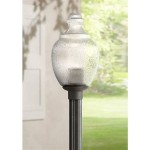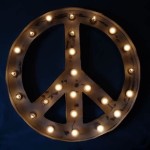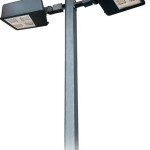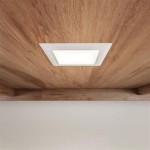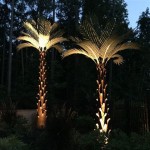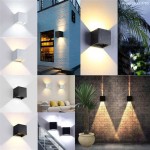Are Outdoor Plugs Waterproof or Not? Understanding Weather Resistance
The functionality of electrical outlets extending beyond the interior of a structure is a common requirement for various exterior tasks and amenities. However, the exposure to external elements introduces the critical question of weather resistance, specifically addressing whether outdoor plugs are waterproof. The answer is nuanced, hinging on a precise understanding of terminology, construction, and regulatory standards. The terminology associated with water resistance, such as "waterproof," "weatherproof," and "water-resistant," carries distinct meanings and implications for the performance and suitability of outdoor electrical devices. Therefore, it is necessary to delineate these terms to understand the level of protection an outdoor plug offers.
The term "waterproof" implies an absolute level of protection, indicating that a device can withstand complete immersion in water without damage or compromise to functionality. In the realm of electrical devices, achieving true waterproof status is exceptionally challenging and often impractical due to the inherent design requirements for connectivity and access. Sealing an electrical outlet to the point of complete water impermeability would necessitate a design that impedes its primary function: the insertion and removal of plugs. Consequently, the term "waterproof" is rarely, if ever, accurately applied to outdoor electrical outlets.
The term "weatherproof" suggests a more realistic level of protection against environmental elements, including rain, snow, and ice. Weatherproof outdoor electrical outlets are engineered to prevent water from entering the internal components under normal weather conditions. This is typically achieved through a combination of design features, such as sealed enclosures, gaskets, and self-closing covers. However, it is essential to recognize that "weatherproof" does not guarantee complete protection against prolonged submersion or exposure to extreme water pressure. Weatherproof outlets are designed to withstand typical weather conditions, but they are not intended to function underwater or endure sustained, forceful water exposure.
The term "water-resistant" denotes a lower level of protection compared to "weatherproof." Water-resistant outlets are designed to resist the penetration of water to some degree, but they are not impervious to it. They may offer protection against light rain or splashes, but they are not suitable for exposure to heavy rain, snow, or standing water. The extent of water resistance varies depending on the specific design and construction of the outlet. Water-resistant outlets are generally less expensive than weatherproof models, but they offer a correspondingly lower level of protection and are typically not recommended for outdoor applications where exposure to water is likely.
Understanding NEMA Ratings for Outdoor Plugs
The National Electrical Manufacturers Association (NEMA) establishes standards for electrical enclosures, including outdoor plugs, to provide a clear indication of their level of protection against environmental hazards. NEMA ratings are commonly used to classify the degree of ingress protection (IP) offered by an electrical enclosure. The IP rating system consists of two digits: the first digit indicates the level of protection against solid objects, such as dust and debris, while the second digit indicates the level of protection against liquids. A higher number signifies a greater degree of protection. For outdoor electrical outlets, a NEMA 3R rating is generally considered the minimum acceptable standard. A NEMA 3R enclosure provides protection against rain, sleet, and snow.
NEMA 4 and 4X enclosures offer even greater protection against water ingress. NEMA 4 enclosures are designed to be watertight, meaning that they can withstand splashing water and hose-directed water. NEMA 4X enclosures provide the same level of water protection as NEMA 4 enclosures but are also corrosion-resistant, making them suitable for use in harsh environments where exposure to salt spray or other corrosive substances is likely. The specific NEMA rating required for a particular outdoor application depends on the anticipated level of exposure to water and other environmental hazards. It is crucial to consult with a qualified electrician to determine the appropriate NEMA rating for the specific application.
The selection of an outdoor electrical outlet should be based not only on the NEMA rating but also on the specific environmental conditions to which it will be exposed. In areas with frequent heavy rainfall or snowfall, a NEMA 4 or 4X enclosure is recommended. In areas with milder climates, a NEMA 3R enclosure may be sufficient. It is also important to consider the potential for exposure to other environmental hazards, such as dust, debris, and corrosive substances. The environment and exposure should be evaluated before choosing any particular product.
Key Features of Weatherproof Outdoor Plugs
Weatherproof outdoor plugs incorporate several key design features to prevent water from entering the enclosure and compromising the electrical connections. These features include sealed enclosures, gaskets, self-closing covers, and corrosion-resistant materials. The enclosure itself is typically constructed from a durable, weather-resistant material, such as polycarbonate or fiberglass. The enclosure is designed to provide a tight seal around the electrical components, preventing water from entering through joints or seams. Gaskets are used to create a watertight seal between the enclosure and the cover. Gaskets are typically made from rubber or silicone and are designed to compress when the cover is closed, forming a barrier against water ingress.
Self-closing covers are an essential feature of weatherproof outdoor plugs. The cover is designed to automatically close when a plug is removed, preventing water from entering the outlet. Self-closing covers are typically spring-loaded and are designed to provide a tight seal against the enclosure. The material selection for outdoor plugs is critical to their longevity and performance. Corrosion-resistant materials, such as stainless steel or powder-coated aluminum, are used for the screws, hinges, and other metal components. These materials are designed to resist rust and corrosion, ensuring that the outlet remains functional and safe over time. The interior components of the outlet, such as the wiring and terminals, are also designed to be weather-resistant. These components are typically coated with a protective layer to prevent corrosion and moisture damage.
The method of installation plays a crucial part in the weather resistance of an outdoor plug. Proper installation is essential to ensure that the outlet provides the intended level of protection. The outlet should be installed according to the manufacturer's instructions and in compliance with all applicable electrical codes. The outlet should be mounted on a solid surface and sealed to prevent water from entering behind the enclosure. All wiring connections should be made securely and protected from moisture. Conduit fittings and sealing compounds should be used to prevent water from entering the conduit and reaching the outlet. Care should be taken to properly seal any openings around the outlet, such as the hole where the wiring enters the enclosure. A sealant designed for outdoor use should be used to fill any gaps and prevent water from entering. Regularly inspecting outdoor electrical outlets is necessary to ensure that they remain in good condition and are providing adequate protection. Inspect outlets for signs of damage, such as cracks, chips, or loose covers. Replace any damaged outlets immediately. Check the gaskets and seals to ensure that they are still in good condition and are providing a tight seal. Replace any worn or damaged gaskets. Clear any debris from around the outlet, such as leaves, dirt, or snow. These materials can trap moisture and accelerate corrosion.
Importance of Ground Fault Circuit Interrupters (GFCIs)
Ground Fault Circuit Interrupters (GFCIs) are a critical safety component for all outdoor electrical outlets. A GFCI is a device that monitors the flow of electricity through a circuit and detects any leakage of current to ground. If a ground fault is detected, the GFCI will quickly interrupt the circuit, preventing electrical shock. GFCIs are particularly important in outdoor environments, where the risk of electrical shock is higher due to the presence of moisture. Water is an excellent conductor of electricity, and even a small amount of moisture can create a path for electricity to flow through a person's body.
GFCI outlets are designed to trip when they detect a ground fault, typically within milliseconds. This rapid interruption of the circuit can prevent serious injury or death. Building codes often mandate the use of GFCI protection for all outdoor electrical outlets. This requirement is intended to protect individuals from the hazards of electrical shock. GFCI outlets can be recognized by the presence of test and reset buttons on the face of the outlet. These buttons are used to verify that the GFCI is functioning properly and to reset the outlet after a ground fault has occurred.
Testing GFCI outlets regularly is vital to ensure that they are functioning correctly. The test button should be pressed at least once a month to verify that the GFCI trips and interrupts the circuit. If the GFCI does not trip when the test button is pressed, it should be replaced immediately. Resetting a GFCI outlet after a trip involves pressing the reset button on the face of the outlet. If the GFCI trips repeatedly, it may indicate a problem with the wiring or the appliance that is plugged into the outlet. In this case, a qualified electrician should be consulted to diagnose and repair the problem. The installation of GFCI protection is a fundamental safety measure for all outdoor electrical outlets. This measure helps prevent electrical shock and ensures the safety of individuals using outdoor electrical devices. It is important to follow all applicable building codes and to consult with a qualified electrician to ensure that GFCI protection is properly installed.

Weatherproof Outdoor Covers Don T Use The Wrong Type

Yichuhaoxi Waterproof Weatherproof Electrical Outdoor Power Plug Socket Lockable With Clear Cover 2 15227fph005

Yichuhaoxi Waterproof Weatherproof Electrical Outdoor Power Plug Socket Lockable With Clear Cover

How To Waterproof Extension Cords

Protect Your Outside Plugs From Water Damage

Yichuhaoxi Waterproof Weatherproof Electrical Outdoor Power Plug Socket Lockable With Clear Cover

Outdoor Countertop Deck Pop Up Waterproof Power Push On Kitchen Ups

Restmo Ip54 Waterproof Electrical Box Outdoor Plug Weatherproof Extension Cord Cover Rectangle Plastic Extra Large Brown

How To Install An Outside Socket External Plug Installation Guide
Dual S Smart Plug Outdoor Waterproof

